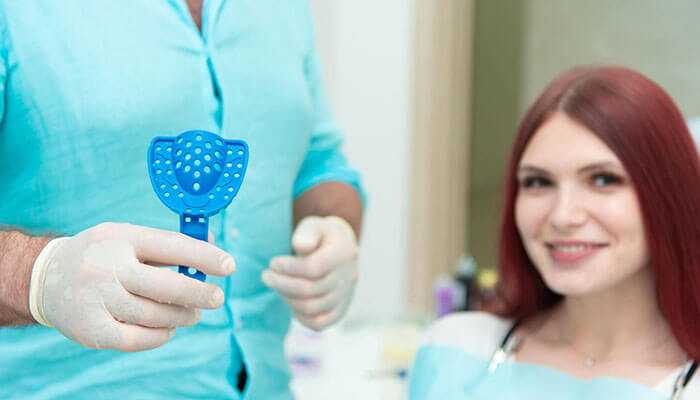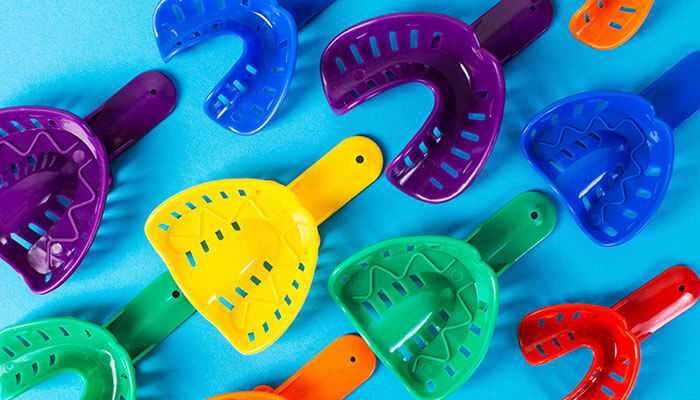Dentistry is a field that evidently reveals its first step in the pursuit of perfect smiles through dental impressions. The process of getting these impressions has been associated with many challenges, and it has sparked fear in many people for a long time. Nevertheless, there is a revolutionary answer that assures transformation in the experience of dentists: plastic impression trays. Gone are those days when you had to put up with the painful metallic trays; now, there’s an era of comfort, accuracy and accessibility.
Imagine a world where having that perfect crown, bridge, or denture was not only necessary but also incredibly comfortable. Plastic trays have just taken over dental practice by storm, either as ready-made or reusable items. Notably, these new gadgets are not just changing the game but redefining it altogether. We will further investigate how these unique plastic impression trays can help you progress towards your dream smile without any turbulence.
What is the difference between metal and plastic impression trays?
Material:
Usually, metal impression trays are made of stainless steel or other metallic alloys, while common plastic types like polyethylene or polycarbonate make up some forms of plastic trays, such as disposable ones.
Comfort:
Plastic impression trays are more comfortable to wear. Unlike metallic trays, plastic materials are soft and flexible, making them comfortable in the mouth. During the impression-taking process, these trays fit into the patient’s mouth better due to their elasticity, hence reducing discomfort.
Flexibility:
These plastic trays can easily bend, making it much easier for them to be inserted or removed from a patient’s mouth. Again, this helps adapt them to different anatomy for more precise impressions.
Disposable vs. Reusable:
Both disposable and reusable can be found in the form of plastic trays. Conveniently, disposable varieties don’t need cleansing after every use, and you will have no problem sterilising the ones that are meant to be used many times.
Precision:
If properly used, these two types of trays, metal and plastic, offer precise imprints, but more detailed ones can be obtained using the latter due to its closer adaptation to the dental arch as well as surrounding tissues.
What are the benefits of plastic trays?
Enhanced Comfort:
Compared with counterparts made from metal, plastic trays provide improved comfort levels among patients. They possess a softer and stretchier material that fits better along the oral cracks, hence minimising any discomfort.
Improved Adaptability:
Plastic trays are more adaptable to the dental arch and tissues around them. This flexibility enables them to mould better around variations in anatomy, leading to accurate impressions.
Reduced Risk of Tissue Trauma:
Their softness and malleability make plastic trays suitable for impression procedures with reduced chances of trauma or irritation to the tissue, which makes them ideal for patients who have sensitive gums or oral tissues.
Disposable or Reusable Options:
Dental practitioners can choose between disposable and reusable plastic trays, which results in convenience and flexibility. Disposable trays do not require sterilisation, while reusable ones are cost-effective when used repeatedly.
Cost-Effectiveness:
Plastic trays are a cheap alternative to metal trays, hence ensuring that such tools transform dental care into an affordable service offering. These findings show that costs are lower overall, and its versatile nature has helped improve practice efficiency, thereby improving profit margins.
Environmentally Friendly:
Biodegradable materials can be used to make one-time plastic trays, unlike the conventional metallic kind. This option is eco-friendly promoting sustainable dentistry practices.
Patient Satisfaction:
Better patient satisfaction and good dental experience are a result of the increased comfort and accuracy that plastic trays provide. Patients’ happiness will make them come back for further treatments and refer the practice to others.
What are the types of plastic Dental impression trays?
Dentulous Trays:
These trays are meant to suit toothed patients with varying jaw sizes and shapes. They have trimmed or punctuated rims, ensuring the best retention of the impression materials and ensuring every detail is captured perfectly.
Edentulous Trays:
These trays have bigger, smoother surfaces moulded specifically to conform to edentulous ridges. They are designed with precision engineering for accurate impressions even in the absence of teeth.
Sectional Trays:
Concentrated on specific portions of a mouth, these trays enable precise impressions, such as crown placements and overlays. They are the choice for targeting exact areas with clinical accuracy.
Quadrant Trays:
Focused just on one section of the mouth, these trays enable the capture of minute details where they count most. These ensure careful impressions during sensitive procedures.
Implant Trays:
These trays are designed for future dentistry and provided with spaces for implant analogues. They are highly accurate in their positioning during impressions, which is an essential foundation of crown and bridge restoration.
Perforated Trays:
These trays have innovated the process of taking impressions by having some holes that enable impression materials stick to the tray. When used for alginate impressions, they offer accuracy without compromising on elasticity allowing every detail of a tooth to be captured.
Trimless Trays:
Maintaining a balance between style and utility, these trays present solid margins that perfectly accommodate putty materials. By eliminating trimming, we have ensured that certain procedures in dental surgery take little time while not interfering with their efficiency.
How do you sterilise plastic impression trays?
The following are some methods used in dental practices for sterilising plastic impression trays:
- Autoclaving: This technique is applicable when there are high temperatures and pressures involved; it works by exposure of trays to intense steam under pressure, thereby exterminating all pathogens.
- Chemical Sterilisation: Here, various ingredients like glutaraldehyde are used as sterilising solutions for soaking trays within specific exposure times, aiming at thorough decontamination.
- Dry Heat Sterilisation: For trays that can’t be put in an autoclave, dry heat sterilisation is the best method to use since it involves the use of high temperatures to kill germs.
- Disposable Trays: For one-time use and throw-away technique for convenience and hygiene reasons.
What is a plastic tray made of?
- Polyethylene (PE): It is used in manufacturing disposable trays because it is flexible and long-lasting.
- Polycarbonate: Reusable trays made from polycarbonate are highly toughened.
- Polypropylene (PP): It is suitable for autoclavable trays because it’s chemical resistant and rigid.
- Acrylic Resins: They are used for custom trays, which give better fit and adaptation.
- Composite Materials: These materials combine different synthetic substances to achieve particular characteristics.
The choice of material depends on factors like intended use, sterilisation needs, and durability.
Summary –
Plastic impression trays have changed the way dental impressions are taken by making them more comfortable, accurate, and versatile. They also enhance patients’ experiences during different procedures, hence reducing operation time and promoting global oral health. India’s Dental Avenue India Pvt. Ltd platform provides a wide range of dental care products and unmatched services at an affordable cost. Dental Avenue has always been at the forefront, with quality being their main focus.



